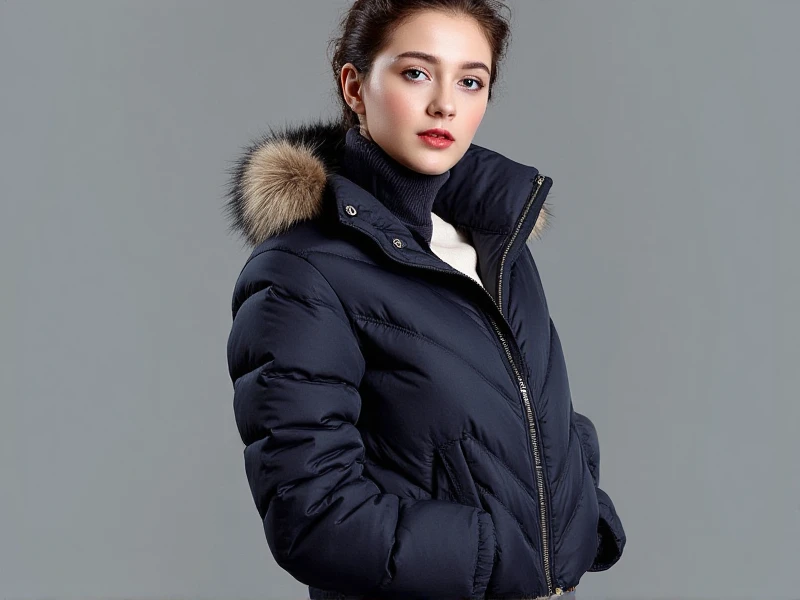
The Ultimate Guide to Stylish & Functional Women's Outdoor Coats
Choosing the perfect women's outdoor coat is about balancing essential performance features with flattering style. Whether braving a mountain hike, commuting in the city rain, or enjoying a crisp autumn walk, the right coat keeps you protected and looking great. Forget bulky, unflattering options; modern designs blend technical expertise with fashion-forward silhouettes. Let’s explore what makes a top-tier coat for your outdoor adventures.
Performance Meets Protection: Non-Negotiables
Any worthy women's outdoor coat must first excel in core protection:
1. Weatherproof Mastery: For rain or snow, waterproofing is crucial. Look for quality membranes like GORE-TEX or similar proprietary technologies (e.g., The North Face DryVent, Columbia Omni-Tech). Breathable fabrics prevent that clammy, trapped feeling during exertion. Seam-sealed construction (taped or welded seams) stops water sneaking through stitching.
2. Insulation Efficiency: Your climate dictates warmth needs:
Down Coats: Superior warmth-to-weight ratio. Goose down offers the highest loft and warmth but needs dryness to perform. Look for high "fill power" (e.g., 600-fill or higher). Duck down is warmer than synthetic synthetichy weight for cost.
Synthetics: (Primaloft, ThermoBall, Coreloft): Retains heat even when wet, dries fast, often more affordable. Great for high-output activities or damp climates. Modern options mimic down very effectively.
Fleece-Lined or Softshells: Ideal for milder temperatures or active pursuits like hiking, providing excellent breathability and light warmth with good wind resistance and stretch.
3-in-1 Systems: Versatile jackets with a waterproof outer shell and a separate inner insulation layer (often fleece or synthetic). Wear together for maximum warmth or separately in milder conditions.
3. Wind Defense: A tightly woven exterior fabric is essential. Many coats integrate specific windproof membranes or treatments, often linked with their waterproof technology. Test the coat feels substantially windproof.
4. Practical Design & Fit: Functionality meets convenience:
Hoods: A good, adjustable hood (preferably helmet-compatible if needed) is essential for true weather protection. Look for stiffened brims to keep rain off the face.
Pockets: Secure, ideally waterproof or lined pockets for essentials and hands. Check zippers (YKK is reliable) and flap coverage.
Adjustability: Hem cords and velcro cuff adjustments allow you to seal out drafts and adapt to layers underneath.
Ventilation: Pit zips are a godsend for releasing heat during high-output activity.
Length: Parkas offer maximum warmth for legs/hips. Shorter jackets like bombers offer greater freedom of movement. Consider your primary use.
Finding Your Perfect Style: Coats for Every Adventure
Today's women's outdoor coat market offers incredible diversity:
Adventure-Ready Parkas: Designed for serious cold, often knee-length, filled with premium down or thick synthetics, featuring robust weatherproofing. Ultimate protection for extreme cold or static activities.
Lightweight Down Jackets: The ultimate compressible warmth layer. Perfect under a shell, for travel, or cool evenings. Modern styles offer flattering cuts beyond the standard puffer.
Waterproof Hardshell Jackets: Your essential shield against heavy rain and snow. Prioritize waterproofing and breathability. These are less insulating on their own but excel as an outer layer over fleece or down.
Versatile Softshells: Fantastic for active pursuits. Offer excellent breathability, stretch, wind resistance, and light weather/splash protection. Ideal for hiking, trail running, or brisk walks.
Fashion-Forward Insulated Jackets: Brands focused on lifestyle offer quilted jackets, puffers, and parkas blending urban aesthetics with core technical features. Think sophisticated finishes, sleeker profiles, and premium materials.
Layering Wisdom: Getting the Most from Your Coat
Understanding how to layer maximizes your coat’s effectiveness across varying conditions:
1. Base Layer: Next-to-skin, wicks away sweat. Merino wool or synthetics like polyester are best. Avoid cotton.
2. Mid Layer: Adds core warmth. Fleece jackets, thin down vests, or light synthetic insulated jackets work well.
3. Your Outer Layer (Coat): Protects against wind, rain, and snow. Choose the insulation level based on the expected temperature and your activity level.
Caring for Your Investment: Maintenance Tips
Proper care extends the life and performance of your women's outdoor coat:
Follow Care Labels: Always!
Clean Regularly: Dirt oils degrade DWR treatments. Use tech-specific detergents (e.g., Nikwax Tech Wash, Grangers Performance Wash) and wash on a gentle, cold cycle.
Revive DWR: After washing (and drying!), iron on low heat (check label!) or tumble dry low. Heat reactivates the DWR coating. If beading diminishes, apply a DWR spray-on treatment.
Store Smart: Store clean and fully dry. Avoid compression sacks constantly for down coats; use large breathable bags or hang them loosely.
Make the Right Choice Before Your Next Outing
Selecting the ideal women's outdoor coat requires matching the garment's capabilities to your intended activities and environment. Prioritize genuine weather protection first – waterproofing, breathability, and appropriate insulation. Then, focus on the functional features you need: pocket configuration, hood quality, adjustability. Finally, embrace the vast array of styles available to find a coat that reflects your taste while conquering the elements. Invest wisely in a well-made coat that delivers both performance and confidence-boosting style for countless adventures ahead.
2025-06-04